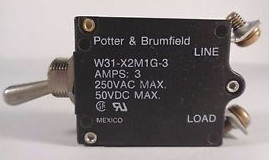Left over:
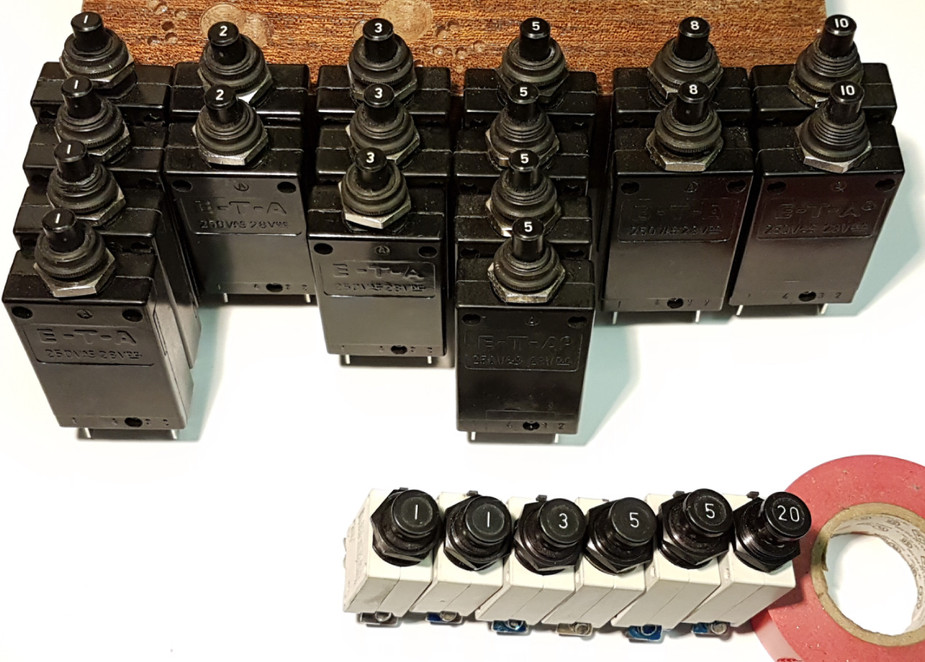
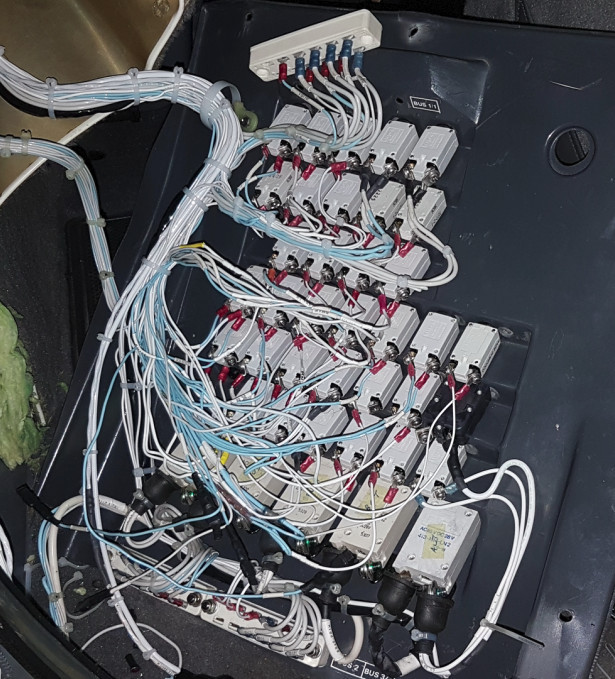
A really back-breaking job, because one cannot get to it. I found the least bad way is to sit on the wing and bend down and to the right. One could lie down into the LH well (obviously the seat has to come out) but then you don’t have room for a soldering iron and a hot air gun.
About half the wires had to be extended.
Tidying-up to do…
The original Socata (ETA) CBs will be for sale – for €10,000 each and with no paperwork 
But, hey, there must be a way to recertify a CB… I was on the phone to one 145 aviation supply company 3 days ago and nearly all their Klixon stock was at least 10 years old, some 20, and they said “it is surplus stock, they were likely 10-15 years old when we got them”. But evidently their customers are OK with this. More likely they never realise.
Having spent all day replacing the buggers with new Klixon ones, I tend to agree 
I think the reasons the CBs fail is because they get hot. That is how they work, after all. A 10A CB carrying say 8A will be pretty hot inside.
Switch/breakers have a tendency to fail quite a bit in my experience. The thought is that it is related to vibration, but that may just be the particular type of breaker/aircraft.
I wouldn’t know why you would use non-pullable ones.
Question: is it wise to pull a circuit-breaker to simulate a failure during a training flight?
I suspect this CB was “current” when the TB was designed c. 1978. and Socata entered into an agreement with Diruptor to keep them available, even at some inflated price.
Eventually that will come to an end and eventually Socata will develop a conversion kit of some sort, which will force you to replace the whole lot for a few k € 
It’s always a problem with long running products using commercial parts.
I am told that Airbus use American parts. Unsurprising; nobody in the US (or most of the world) would buy an airliner which needs everything shipped over from France.
Only the French would manufacture a CB for one application, I recognise some of the other Disruptor products from various French Aircraft.
Fortunately Robin have now largely stopped using French stuff and have found the Aircraft spruce catalog .
Not ETA curiously. Diruptor in France. But good luck with this one:
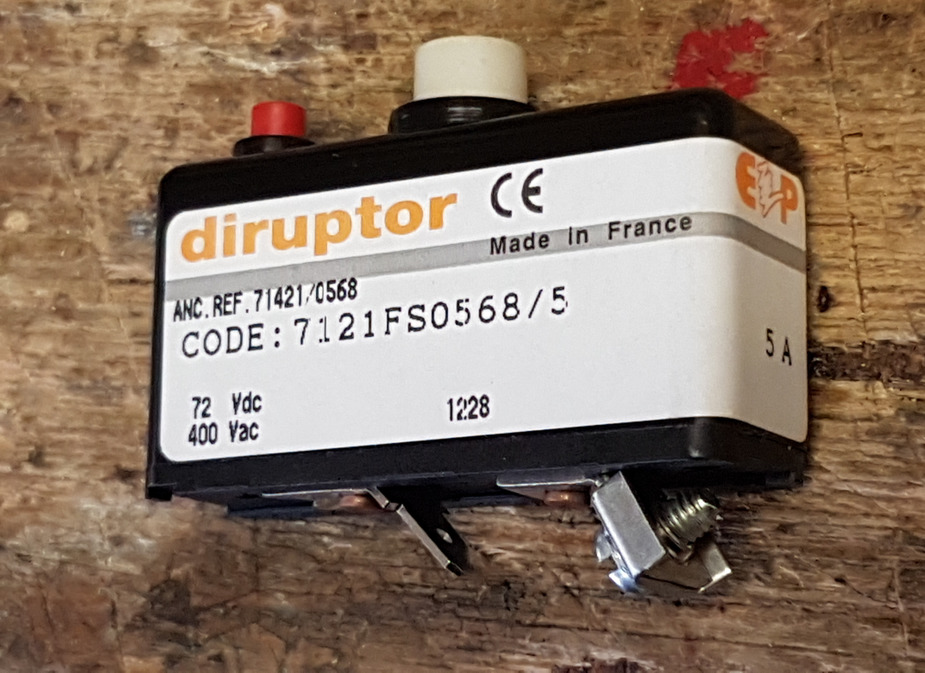
Their catalogue here doesn’t show anything like this part (obviously). So it looks like another Socata-agreed-exclusivity P/N. The P/N doesn’t come up on google at all. They are not too pricey – below 100 quid I think. However Socata prices have been rocketing lately; I reckon they have doubled in the last few years. Somebody got a quote around 3k for the aileron hinge kit which was 1k some years ago.
The other P/N googles to this with no resolution.
Peter.
I’m going to take a guess that the French Switch / CB’s are maufacured by ETA. Robin have used these for years and now have moved on to use a much lighter and easier to fit type.
The advantage of the type of ETA switches is you can get them direct from the manufacturers at a much lower price than from Robin.
During my prolonged Avionic refit I needed a splitter for the antenna line. This has a Garmin part number and Garmin quote the manufacturers part number in the install manual. The cost to me from a major avionics company was in the order of £220, the same item from a well known parts supplier was £105 ( both +VAT & postage ). Direct from the manufacturers U.K. agent it cost £58 inc VAT & delivery. Having told an independent avionic installer about this he has got the agent to supply these items few £ cheaper if he buys five at a time !
AdamFrisch wrote:
I never understood why they need to be fuses at all
Fuses are another matter. The aircraft I learnt on had fuses, rather than CBs, and they are a quantum leap worse, as you have to carry spares of all sizes, and the diagnostic act of resetting blows a/the spare.
I remember thinking, when I first flew with CBs rather than fuses, “what a great idea.” But I only took my house from fuses to CBs about five years ago!
I think the issues with combined switches and CBs are:
These are the combined ones Socata use; an obscure French make

As per the last point above, the feed to (at least some of) these is protected at (I think) 80A which means the wire feeding them needs to be really thick. It would have been far better to stick another seven CBs into the already huge CB panel
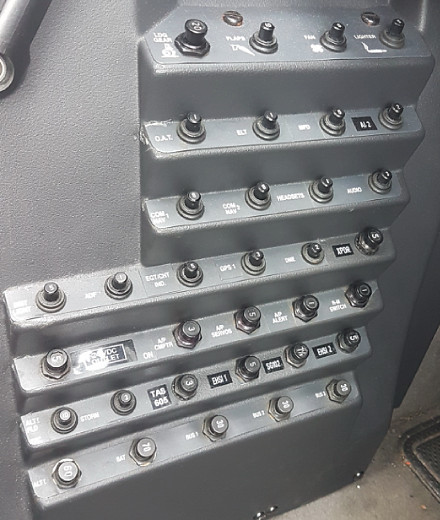
and have seven good quality toggle switches (APEM are French so would qualify  – they use them in the TBM) in the panel shown.
– they use them in the TBM) in the panel shown.
In the CB panel above, only the bottom row of CBs have an unprotected feed.
Was this the type used in US aircraft – Potter & Brumfield? I have usually heard of it mentioned in the same sentence as “junk” 
